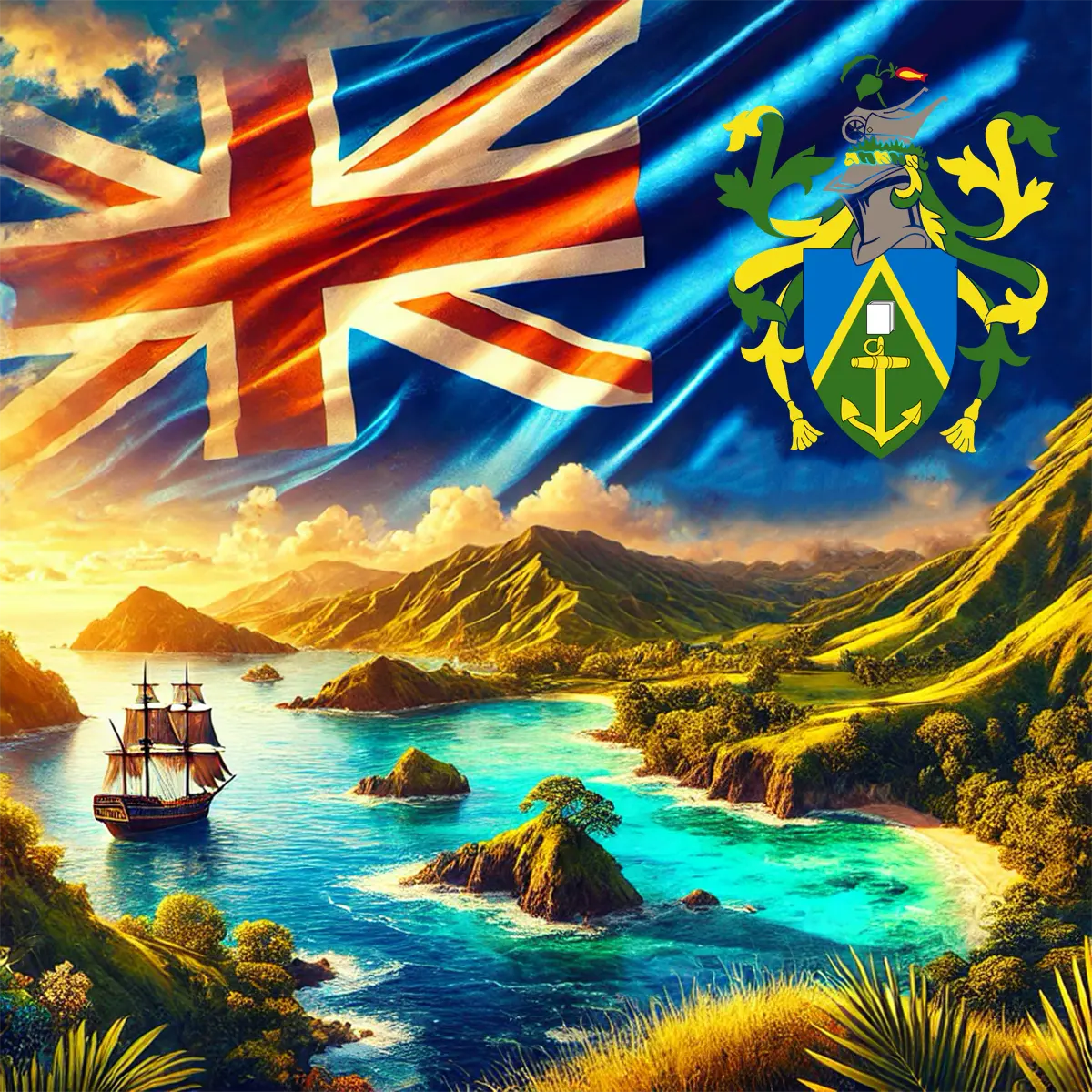The first European to see the island was Captain Philip Carteret in 1767. On July 3, he recorded in his diary his first impressions of the island, which seemed to him “a large rock rising from the sea.” The island was named in honor of the young man, the son of Marine Major Pickern, who was the first to spot it. Due to the strong surf, Carteret was unable to land on the island, and because he did not have a chronometer, his crew mistakenly determined the coordinates of the island, marking it on the map 188.4 nautical miles from its actual location. Despite this inaccuracy, Captain James Cook became interested in Carteret's report and set out to find the island. However, his expedition was interrupted by an outbreak of scurvy. If it were not for the subsequent history of the island associated with the crew of the Bounty, Pitcairn might have remained just a stopover for whalers.
Under the command of William Bly, the Bounty arrived in Tahiti on October 26, 1788. The crew stayed on the island for five months, during which some of the sailors became close to the locals. When it was time to return to England, some crew members were already planning to stay on the island. On April 28, 1789, three weeks after leaving Tahiti, Fletcher Christian and some of the crew mutinied, driving Bly and 18 of his loyal men in a boat into the sea. After the mutiny, most of the crew wanted to return to Tahiti, but Christian realized that the British navy would be looking for them starting from Tahiti. So they visited the island to pick up cattle and a few Polynesians to start a new settlement. “The Bounty headed west, exploring the Cook Islands, Tonga, and the eastern islands of Fiji in search of a hidden place to settle. This journey lasted almost four months. Fletcher Christian, based on Carter's story, began looking for Pitcairn Island, but found that its location was incorrectly marked on maps. After a long search, the island was finally spotted on January 15, 1790.
Pitcairn turned out to be uninhabited, fertile, and warm, which exceeded Christian's expectations. They then moved their livestock and property ashore, and the ship Bounty was deliberately burned on January 23, 1790, to avoid detection by European ships. The land was divided among the Europeans, and Polynesian men were not given any land and were effectively turned into slaves. Conflicts between Europeans and Polynesians grew due to the imbalance between the number of men and women, which led to Polynesian men having to share women. In September 1793, the Polynesians decided to kill several Europeans, including Fletcher Christian. But the cause of their conflicts did not disappear; on the contrary, they now feuded with each other, which led to the death of all Polynesian men. Only four Europeans survived: Edward Young, Matthew Quintal, John Adams, and William McCoy, as well as ten women and their children. Ten years after arriving on Pitcairn, John Adams remained the only male among the first settlers.
In his old age, John Adams found it increasingly difficult to care for his wife Theo (who had become blind) and to provide for the education of his growing number of children. His attempts to appeal to the British government and missionary societies for help in finding a successor to teach his children were unsuccessful. In December 1823, the British whaling ship Cyrus arrived on the island. John Buffett took pity on Adams and asked Captain John Hall to allow him to stay on the island. Buffett was allowed to stay, but his friend John Evans was not. Evans went ashore and hid until the ship left. Both men were accepted into the community and enriched the island's genetic pool, becoming the first settlers who had no relation to either the Bounty or the Polynesians. Buffett married Dolly Young, and Evans married Adams' daughter, Rachel. Buffett tutored children, conducted church services, and taught the islanders carpentry, which later became the basis of the island's main industry.
The island's population grew to 66 people, up from 35 17 years earlier. On March 5, 1829, John Adams died at the age of 65, followed nine days later by his wife Theo. He left behind a community that, despite its rebellious beginnings, suffering, and murder, became the basis for many Victorian sermons, and Adams was remembered by the name known to the entire community - “The Father.”
In 1831, there was an attempt to relocate the entire community to Tahiti, but the people of Pitcairn were unable to adapt to life and suffered from disease. After many people died, 65 people returned to their island on September 3, 1831. By 1850, the population had grown to 156, leading to new discussions about emigration due to limited resources. In 1856, all 193 inhabitants moved to Norfolk, an island with developed infrastructure. However, many people wanted to return to Pitcairn, so in 1859 the first group returned, and in 1864 other settlers arrived on Pitcairn, bringing the total population to only 43 people. The island had to start its development from scratch, and it took a long time to regain at least the advantages it had before the resettlement to Tahiti.
In 1914, as a result of the opening of the Panama Canal, Pitcairn had no direct connection to New Zealand. One ship a week passing by the island with a hundred passengers on board looking to buy souvenirs was enough to end Pitcairn's isolation. Lifestyles inevitably changed, but Pitcairn's state economy was still in decline, and it was only with the issuance of postage stamps in 1940 that the island was able to afford some of the public amenities taken for granted in other parts of the world.





